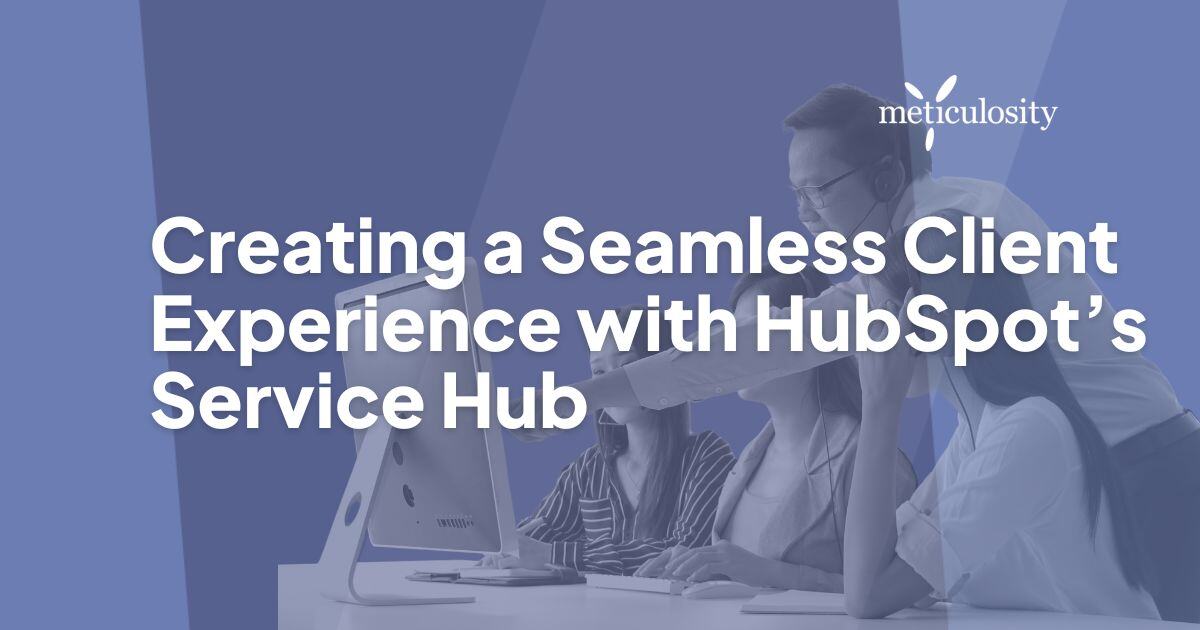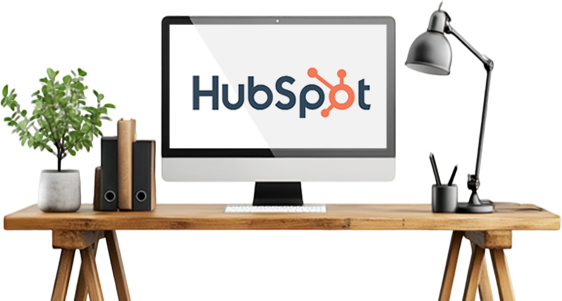Providing an exceptional client experience is crucial for business success. Customers expect fast responses, efficient support, and personalized interactions. A seamless service experience not only improves customer satisfaction but also fosters long-term loyalty and retention.
HubSpot’s Service Hub is designed to help businesses streamline their customer support operations, making it easier to manage inquiries, collect feedback, and empower customers with self-service solutions. In this guide, we explore how businesses can leverage Service Hub to enhance client interactions and build stronger relationships.
Looking to optimize your agency’s automation and client experience? Explore how Meticulosity’s Agency Automation can help.
Understanding HubSpot’s Service Hub
HubSpot’s Service Hub is an all-in-one platform designed to help businesses provide exceptional customer service. It integrates seamlessly with HubSpot’s CRM, ensuring that service teams have complete visibility into client interactions across sales and marketing.
Key Features of Service Hub
HubSpot’s Service Hub includes:
- Ticketing System for managing customer inquiries and support requests.
- Knowledge Base to provide self-service options and reduce repetitive inquiries.
- Customer Feedback Tools to measure satisfaction and make improvements.
- Automation & Live Chat for faster response times and personalized support.
By centralizing customer service operations, Service Hub enhances efficiency and ensures a consistent, high-quality experience for clients.

Implementing an Efficient Ticketing System
Managing customer inquiries efficiently is essential for a smooth service experience. With HubSpot’s ticketing system, businesses can streamline issue resolution by automatically creating and assigning tickets, tracking issue status, and routing inquiries to the right team members. Best Practices for Ticket Management:
Categorizing Tickets
Organizing tickets by urgency and type ensures that high-priority issues receive immediate attention while routine inquiries are handled efficiently.
Automating Follow-Ups
Automation ensures no request goes unanswered by sending reminders and updates to customers and support teams.
Tracking Response and Resolution Times
Using HubSpot’s reporting tools helps businesses monitor performance and optimize processes for better client satisfaction.
An organized ticketing system reduces delays, improves efficiency, and enhances overall customer service.
Leveraging Customer Feedback for Continuous Improvement
Understanding client needs is critical for business growth. HubSpot’s feedback tools help businesses gather insights through surveys and Net Promoter Score (NPS) tracking.
How to Implement Effective Feedback Loops
Sending Post-Service Surveys
Surveys help measure customer satisfaction and identify areas for improvement.
Using NPS Scoring
Net Promoter Score (NPS) identifies promoters, passives, and detractors, providing insight into customer loyalty.
Analyzing Feedback Trends
Regularly reviewing feedback allows businesses to make data-driven service improvements.
By actively listening to customers, businesses can refine their support strategies and build a more client-centric service model.
Enhancing Self-Service with a Knowledge Base
Customers prefer finding quick answers without waiting for a support agent. A knowledge base enables businesses to provide self-help resources for common inquiries.
Steps to Build a High-Value Knowledge Base
Identify Frequently Asked Questions
Understanding common pain points ensures that customers find relevant information easily.
Create Well-Structured Articles
Step-by-step guides with visuals enhance the user experience and improve comprehension.
Optimize for Search
Using relevant keywords and categorization makes it easier for customers to find solutions quickly. A well-maintained knowledge base reduces support ticket volume and empowers customers to resolve issues independently.
Automating and Personalizing Client Interactions
Automation is key to delivering timely and personalized support. HubSpot’s automation tools help businesses set up chatbots, automate ticket assignments, and personalize email follow-ups based on customer history and preferences.
Example Use Case
If a customer submits a ticket about a billing issue, HubSpot can automatically trigger an email with relevant knowledge base articles while assigning the request to an agent.
Automation enhances efficiency while maintaining a human touch in customer interactions.
Integrating Service Hub with Sales and Marketing
A seamless customer experience requires alignment between service, sales, and marketing teams. HubSpot’s CRM integration allows businesses to:
- Track every client interaction from initial inquiry to post-sale support.
- Use customer data to personalize outreach and upsell relevant services.
- Automate client onboarding processes for a smoother experience.
By breaking down silos between departments, businesses can create a cohesive journey that enhances client retention and satisfaction.
Measuring Success: Key Metrics to Track
To evaluate the effectiveness of customer service efforts, businesses should track key performance indicators (KPIs) within HubSpot. Key Metrics to Monitor:
First Response Time
The speed at which initial inquiries are acknowledged.

Ticket Resolution Time
How quickly issues are resolved from the time they are opened.
Customer Satisfaction Score (CSAT)
A measure of customer satisfaction with individual support interactions.
Net Promoter Score (NPS)
A metric used to gauge customer loyalty and the likelihood of referring others.Consistently monitoring these metrics helps teams optimize processes and improve the overall client experience.
Conclusion
A seamless client experience is the foundation of business success. HubSpot’s Service Hub provides the tools needed to improve efficiency, automate workflows, and personalize support. By implementing ticketing systems, feedback loops, and knowledge bases, businesses can create a customer-first service strategy that drives long-term growth.
Ready to take your agency’s customer experience to the next level? Learn how to automate and streamline your processes with Meticulosity’s Agency Automation.
Frequently Asked Questions
1. What size businesses can benefit from HubSpot’s Service Hub?
Service Hub is scalable and works for small startups, growing agencies, and large enterprises looking to enhance client support.
2. How does Service Hub compare to other customer service platforms?
Unlike standalone tools, HubSpot integrates with its CRM, making it easier to track and manage customer interactions across departments.
3. Is it easy to set up automation within Service Hub?
Yes, Service Hub offers user-friendly automation tools that allow businesses to streamline ticket management, follow-ups, and chat responses.
4. Can I integrate Service Hub with other tools I already use?
Yes, HubSpot supports integrations with tools like Slack, Zoom, and third-party help desk solutions to enhance workflows.
5. How does the knowledge base feature help reduce support requests?
By providing a centralized self-service portal, customers can find answers quickly without submitting tickets, reducing agent workload.







